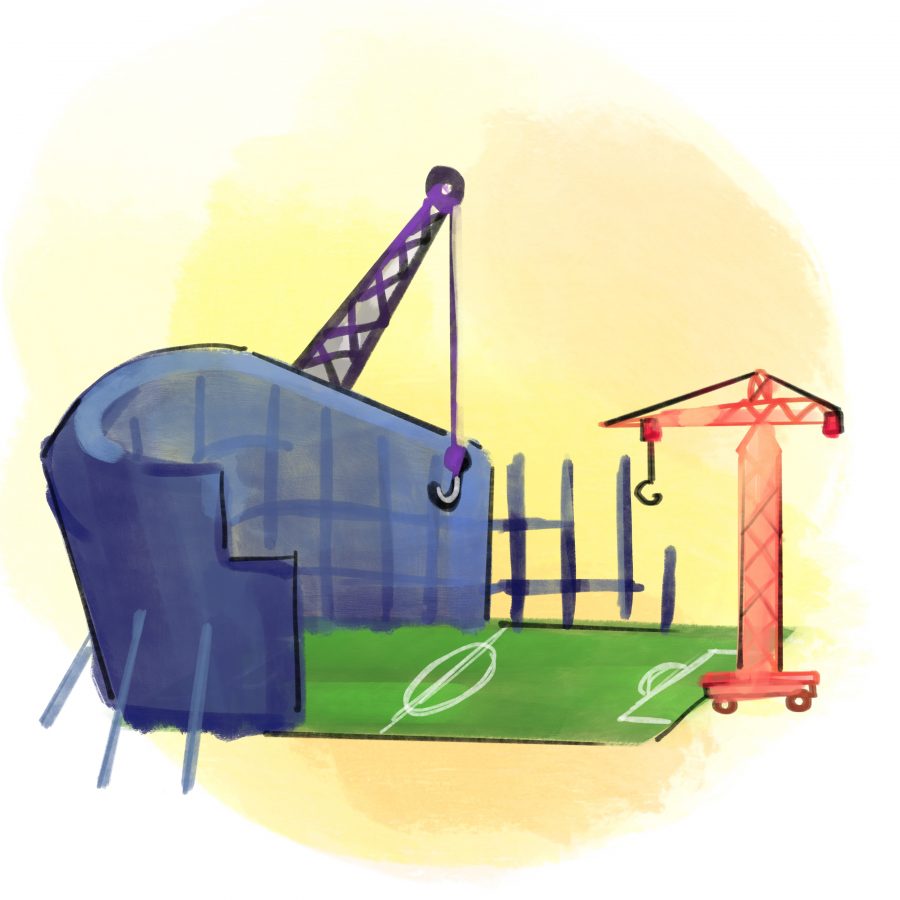The Austin Chamber of Commerce has a goal: score a new Major League Soccer franchise. The Columbus Crew announced plans to relocate from its Ohio home earlier this year. Since then, owner Precourt Sports Ventures has been courting Austin as the leading contender for its new spot.
Due to a lack of public funding for a new stadium in Ohio, the team is packing up and moving to Austin in search of public subsidies. Providing that funding would be a serious mistake.
Taxpayer money will be wasted and minority neighborhoods will be damaged by subsidizing and supporting the team’s relocation. City leadership should reject PSV’s short-sighted proposal.
Teams like the Columbus Crew hook cities on the allure of a stadium and institution that will inject millions into the local economy. Creating jobs, attracting thousands of sports fans and countless tourists is the mantra of franchise owners. But their studies exaggerate their positive impact. Experts have long agreed that the economic impact of publicly funded stadiums is negligible at best and destructive at worst. No recent investment in a public stadium has created a reasonable rate of return, but the owners still reap millions.
Another Texas town already made this mistake. In Dallas, the new Cowboys stadium was promised to generate $238 million in annual revenue. Instead, the city still loses $18.2 million annually in subsidy payments. Austin gaining a new sports franchise at the cost of another Texas city will only perpetuate the cycle of atrocious business practices. While the sports may be different, the key tenet of publicly funded stadiums fails to repay municipal investment.
Beyond economic impact, adopting the Columbus Crew will displace countless residents. The presence of a stadium raises rent by more than 20 percent. And over time, the neighborhood changes to house mostly upper-class, single, young, white professionals.
East Austin residents are already concerned of being displaced by the new development. It is imperative that the mayor and city council listen to them. The leading site for the new stadium is placed in Austinites’ backyard — at Guerrero Park in East Austin. The creation of a stadium in East Austin is likely to force prices higher and drive gentrification.
The new team is framed as a harbinger for economic development, a source of economic revitalization and civic pride. But these are terms that often obscure a more nefarious truth. The league uses these terms to ignore the deleterious impact stadiums have on underprivileged communities, and municipalities buy it hook, line and sinker.
It is imperative that Austinites value the integrity of their city over the spectacle of a stadium. Go visit Guerrero Park and see what we stand to lose. Be active. In Milwaukee, San Francisco, San Jose and Seattle, voters forced franchise owners to revise their demands. Austinites must voice their opinion in front of city council. It’s the most effective means we have of combating the monopolies sports leagues have created.
As Austin develops, it will continue to attract interest from venture posing to invest in the local economy — see Amazon. The city must prioritize affordable housing and equal economic opportunity over the allure of big names.
Austin is not a soccer town, it doesn’t need to play the game.
Hasan is a finance and international relations and global studies sophomore from Plano. Follow him on Twitter @uzziehasan.





















